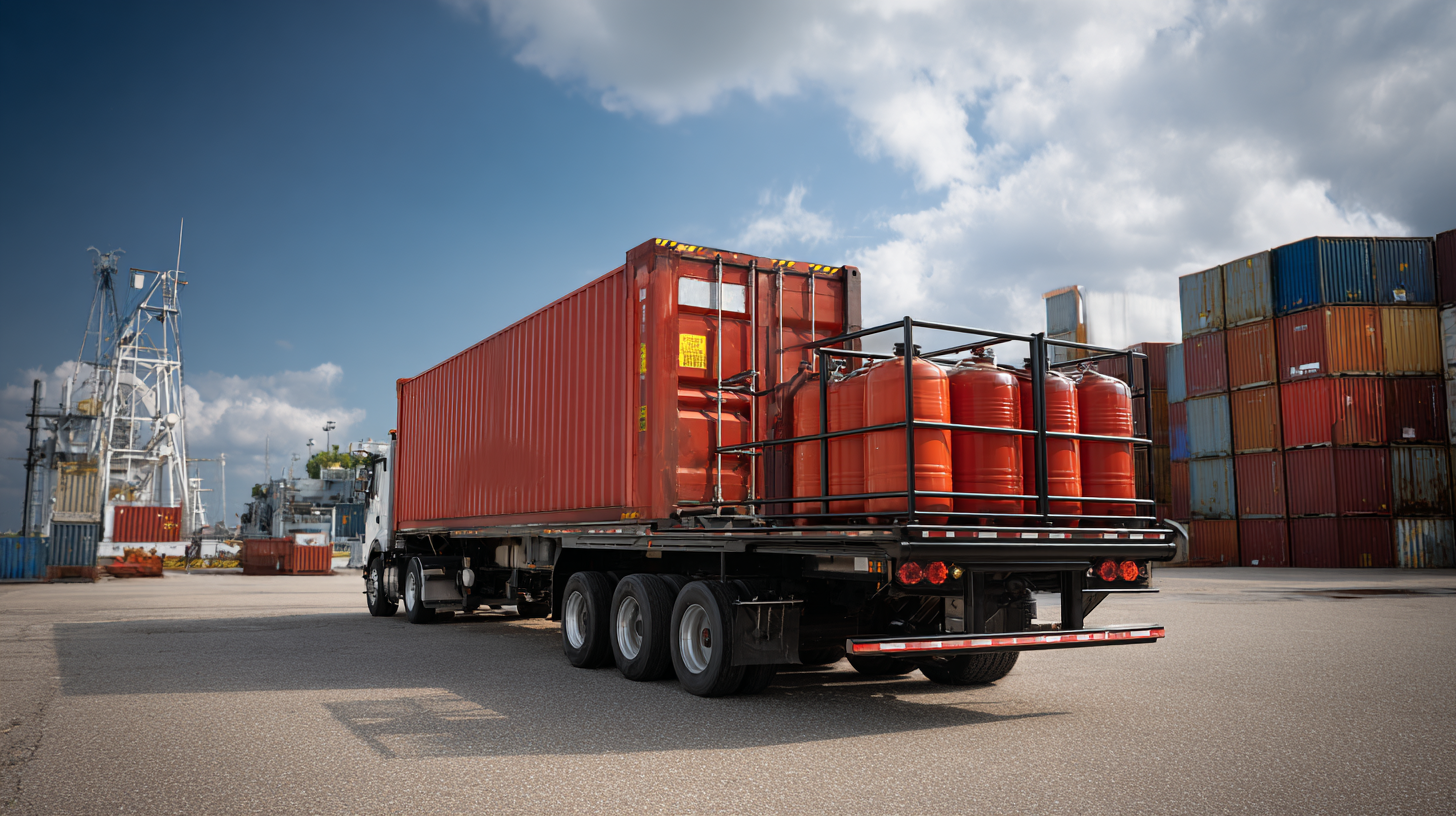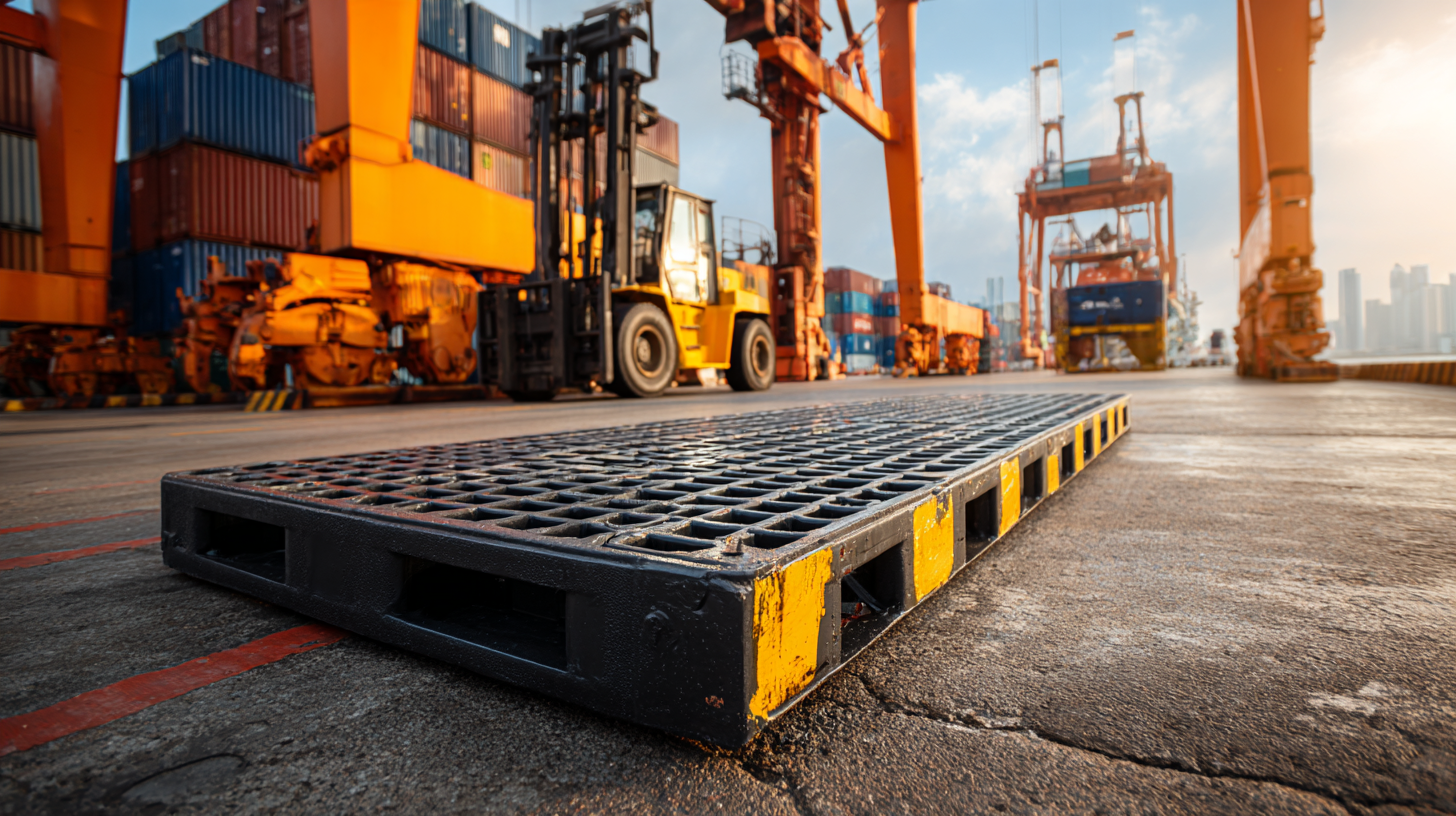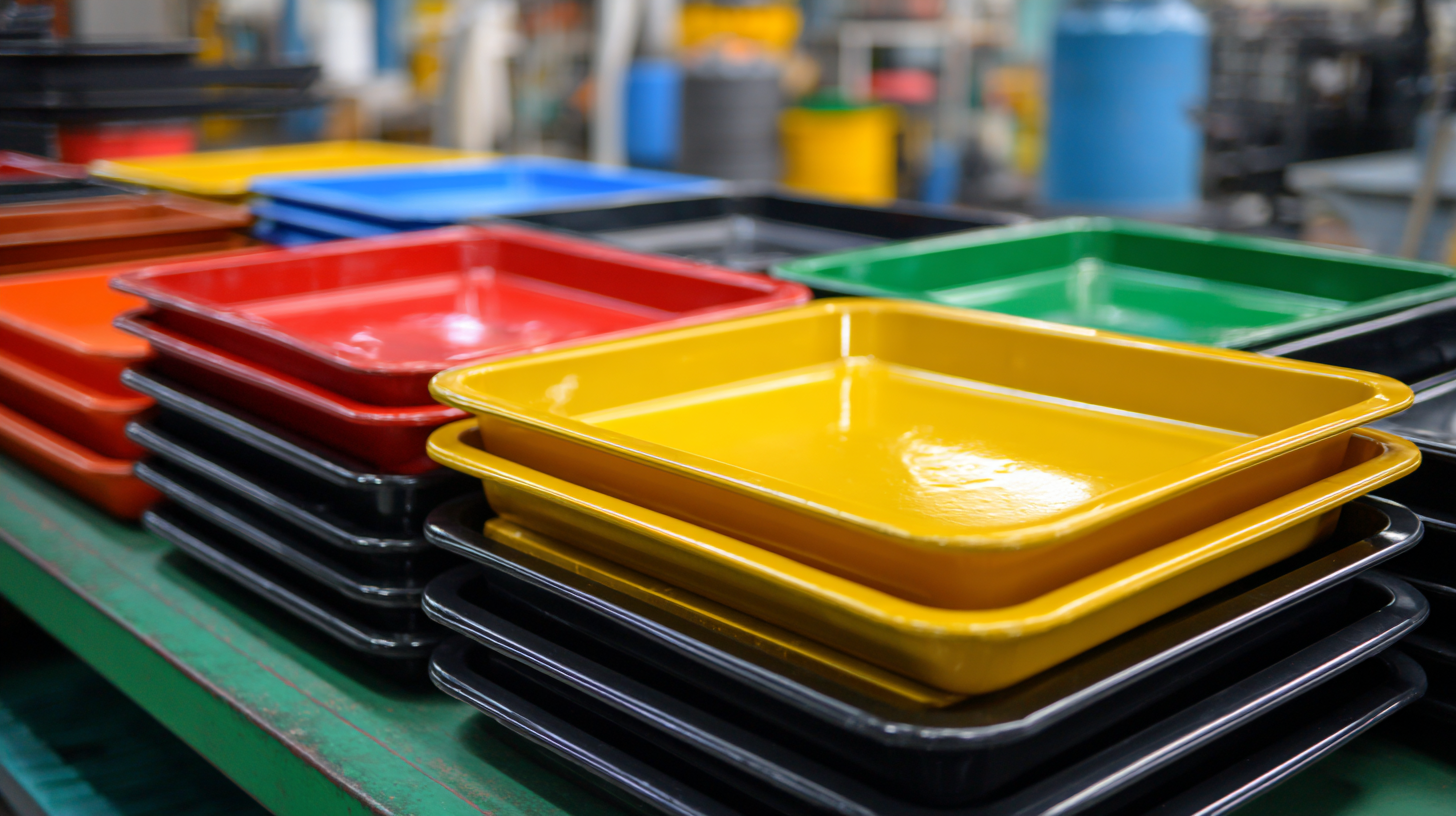Navigating Import-Export Certifications: A Guide to Selecting the Best Spill Tray for Your Needs
In today’s global trade landscape, the importance of adhering to import-export certifications cannot be overstated, especially when it comes to the safe handling of hazardous materials. A critical component of this process is the selection of the right spill tray, which serves as a protective measure against potential spills and leaks during transportation and storage. However, navigating the complex world of spill trays can be challenging due to various factors, including material types, capacities, and regulatory requirements.

As businesses strive to meet compliance standards while ensuring environmental safety, this guide aims to demystify the process of choosing the best spill tray for your needs. By addressing common problems associated with different types of spill trays and providing practical solutions, we will equip you with the knowledge needed to make informed decisions that not only protect your goods but also uphold safety and regulatory standards.
Understanding Import-Export Certifications: Key Considerations for Businesses
When engaging in international trade, understanding import-export certifications is crucial for businesses aiming to ensure compliance and facilitate smooth operations. These certifications serve as evidence that products meet specific safety, quality, and environmental standards, which vary significantly from one country to another. Companies must carefully evaluate the certifications required for their products to avoid costly delays and potential penalties. Engaging with local authorities or consulting import-export professionals can provide guidance on the necessary certifications based on the nature of the goods being shipped.
One key consideration in this process is the relevance of these certifications to spill containment equipment, such as spill trays. Selecting the right spill tray not only involves assessing its physical characteristics, like size and material, but also its compliance with relevant certifications for hazardous materials. Proper certifications ensure that the spill tray you choose meets local regulations and industry standards, ultimately protecting your business from liability risks. By prioritizing compliance from the outset, businesses can streamline their import-export processes and focus on sustainable growth.
Navigating Import-Export Certifications: A Guide to Selecting the Best Spill Tray for Your Needs
| Certification Type | Description | Key Considerations | Typical Use Case |
|---|---|---|---|
| EPA Certification | Certification for compliance with environmental regulations. | Ensures products meet safety and environmental standards. | Used for spill containment in chemical storage. |
| ISO 9001 | Quality management system certification. | Focuses on consistent quality and customer satisfaction. | Applicable to all manufacturing and service sectors. |
| CE Marking | Conformity marking for products sold within the European Economic Area. | Indicates compliance with EU safety, health, and environmental protection standards. | Common for spill trays used in Europe. |
| UL Listing | Certification that a product meets safety standards in the U.S. | Focuses on product safety and risk management. | Often required for electrical components and safety equipment. |
| FM Approval | Fire Safety Approval by Factory Mutual. | Indicates compliance with rigorous fire safety standards. | Essential for safety products in industrial settings. |
Market Analysis of Spill Trays: Trends and Predictions for 2025
As we look ahead to 2025, the market for spill trays is expected to witness significant growth driven by increasing regulatory requirements and heightened awareness regarding environmental protection. Businesses across various sectors, including manufacturing, transportation, and storage, are becoming more vigilant about spill prevention and containment measures. This trend is not only reflective of stricter compliance mandates, but also a broader shift towards sustainability practices. Companies are now prioritizing spill trays made from eco-friendly materials, marking a shift in consumer preferences that manufacturers must address.
Moreover, advancements in technology are shaping the spill tray market. Innovations such as modular designs and smart spill trays equipped with leak detection sensors are emerging, providing increased efficiency and safety for users. As organizations strive for enhanced compliance and operational efficiency, they will likely gravitate towards spill trays that offer both functionality and adaptability. By 2025, the integration of such technologies could become a significant differentiator in the competitive market, pushing manufacturers to not only focus on traditional designs but also innovate to meet evolving customer needs.
How to Select the Right Spill Tray: Factors to Evaluate
When selecting the right spill tray for your needs, it's crucial to consider several factors that directly impact its effectiveness. First, assess the type of liquids you will be storing; different materials have varying degrees of compatibility with chemical substances. For example, polyethylene trays are excellent for acids, while steel trays may be more suitable for hydrocarbons. Ensure that the tray material aligns with the specific chemicals to prevent reactions that could lead to leakage or damage.
Another essential factor to evaluate is the size and capacity of the spill tray. Consider the volume of liquids you typically handle, and choose a tray that can accommodate this without risk of overflow. It's also important to think about the available space in your facility; selecting a tray that fits your area while allowing for safe handling is key.
**Tips:** Always check local regulations for spill containment requirements and ensure that your chosen tray meets these standards. Additionally, look for features such as built-in drainage systems or anti-slip surfaces, which can enhance safety and usability in your workspace.
Navigating Import-Export Certifications: A Guide to Selecting the Best Spill Tray
This bar chart illustrates the importance rating of various factors to consider when selecting a spill tray for import-export certifications. The ratings on a scale of 1 to 10 highlight the significance of material durability, size compatibility, load capacity, pallet design, and cost in making an informed decision.
Regulatory Compliance: Navigating Certification Requirements for Spill Trays
When dealing with hazardous materials, ensuring compliance with regulatory requirements is paramount. Spill trays, designed to contain leaks and spills, must meet specific certifications to ensure they provide adequate protection and safety. Navigating the labyrinth of regulations can be challenging; however, understanding the certification requirements is crucial for selecting the right spill tray for your needs. Various organizations, such as the Environmental Protection Agency (EPA) and Occupational Safety and Health Administration (OSHA), set strict guidelines that manufacturers must follow. These certifications reflect the quality and efficacy of the spill trays in real-world applications.

To make an informed decision, it's essential to evaluate the specific regulations that pertain to your industry. Depending on the type of materials you handle—whether chemical, oil, or other hazardous substances—different standards might apply. Look for spill trays that have passed rigorous testing and have certifications such as EPA compliance or UL certification. Additionally, consider factors like capacity, material durability, and ease of cleaning. By prioritizing regulatory compliance and understanding certification requirements, you can ensure that you choose a spill tray that not only meets legal standards but also safeguards your workplace effectively.
Best Practices for Maintaining Spill Tray Effectiveness in Various Industries
When selecting spill trays for industries that handle hazardous materials, understanding best practices for maintaining their effectiveness is crucial. According to the Environmental Protection Agency (EPA), improper management of hazardous substances can lead to severe environmental impacts, which can be costly both financially and legally. Regular inspections and maintenance of spill trays ensure they are effectively capturing leaks and spills, reducing the risk of contamination. For instance, a study by the American Society of Safety Professionals highlights that organizations that implement routine audits of their spill control equipment can decrease incidents by up to 30%.

In addition to routine inspections, keeping spill trays clean and free from debris is vital. The Occupational Safety and Health Administration (OSHA) recommends that companies regularly assess their spill containment equipment to ensure compliance with safety regulations. This includes monitoring spill trays for wear and tear, especially in high-traffic areas where spills are more likely. The National Institute for Occupational Safety and Health points out that spill trays should be made of materials that resist chemical corrosion to prolong their lifespan and effectiveness. By adhering to these best practices, industries can significantly enhance their spill management capabilities and protect the environment.